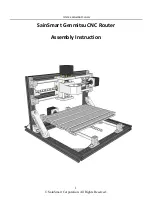
Chapter 3: System planning
Site planning
Page 3-21
Site planning
This section describes factors to be considered when planning the proposed link end sites,
including grounding, lightning protection and equipment location for the ODU and PSU.
Grounding and lightning protection
Warning
Electro-magnetic discharge (lightning) damage is not covered under warranty. The
recommendations in this guide, when followed correctly, give the user the best
protection from the harmful effects of EMD. However 100% protection is neither
implied nor possible.
Structures, equipment and people must be protected against power surges (typically caused by
lightning) by conducting the surge current to ground via a separate preferential solid path. The
actual degree of protection required depends on local conditions and applicable local
regulations. To adequately protect a PTP 550 installation, both ground bonding and transient
voltage surge suppression are required.
Full details of lightning protection methods and requirements can be found in the international
standards IEC 61024-1 and IEC 61312-1, the U.S. National Electric Code ANSI/NFPA No. 70-1984
or section 54 of the Canadian Electric Code.
Note
International and national standards take precedence over the requirements in this
guide.
Lightning protection zones
Use the rolling sphere method (
) to determine where it is safe to mount equipment.
An imaginary sphere, typically 50 meters in radius, is rolled over the structure. Where the
sphere rests against the ground and a strike termination device (such as a finial or ground bar),
all the space under the sphere is considered to be in the zone of protection (Zone B). Similarly,
where the sphere rests on two finials, the space under the sphere is considered to be in the
zone of protection.
















































